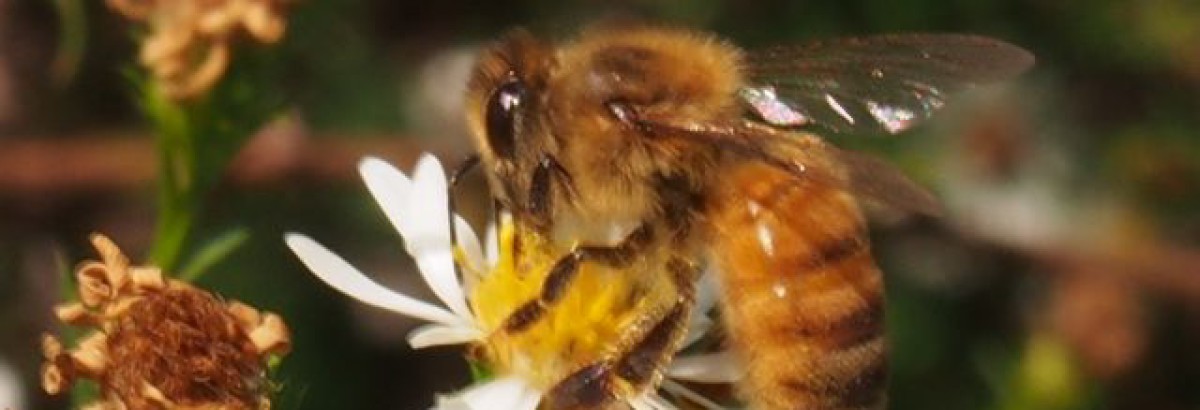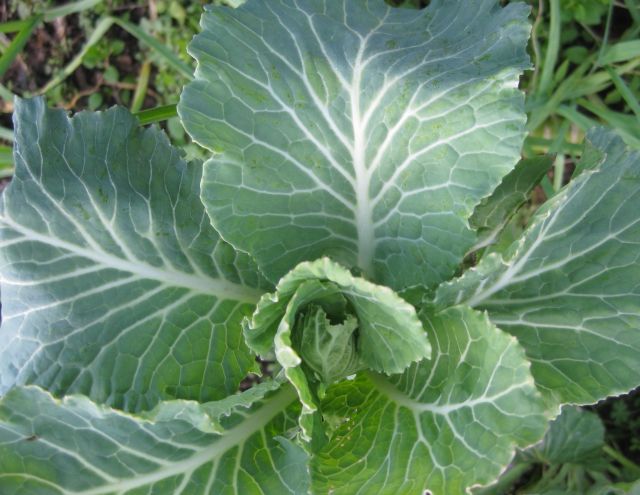With temperatures for several consecutive days falling below 25 deg F (excluding wind chill) I decided to see which vegetables in the open raised beds were doing well.
Garlic of course relishes winter but it is not for eating now:

Collard, kale and turnip greens are doing fine. Here is a collard:
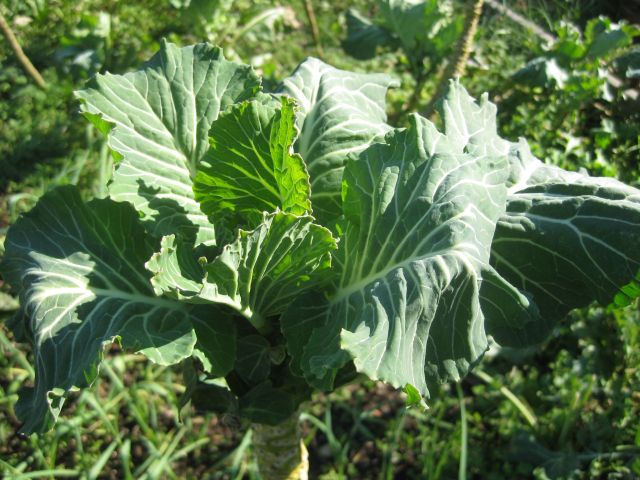
And here is some kale:

When it comes to turnip greens, it appears there are two kinds – the true turnip greens with very large leaves and a sturdy white base:
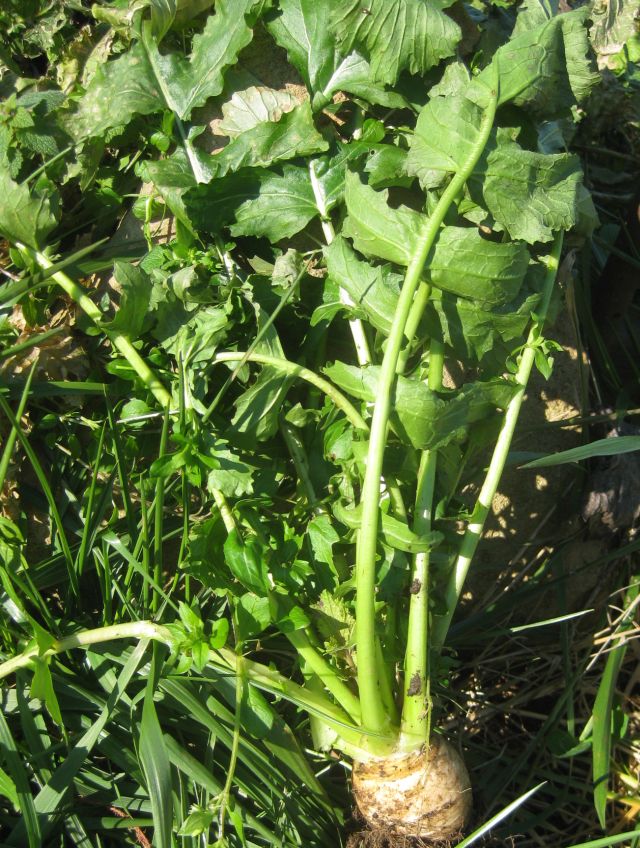
And the other type is the regular turnip which tastes fine despite low 20 temperatures, though its leaves are not as nice as the bona fide turnip greens:

The anomalies make growing interesting. I scattered turnip greens and turnip seed in a planting area between the apple trees and some of the seed scattered too far and those individual seeds, now plants, are very large, perhaps because there was no crowding so they could really spread their leaves; or different nutrients in the soil. Or some other reason. As I was mulching the tree beds I stumbled over one turnip and its size approximated a baseball – I gave it to my neighbor and wish I had snapped a pic.
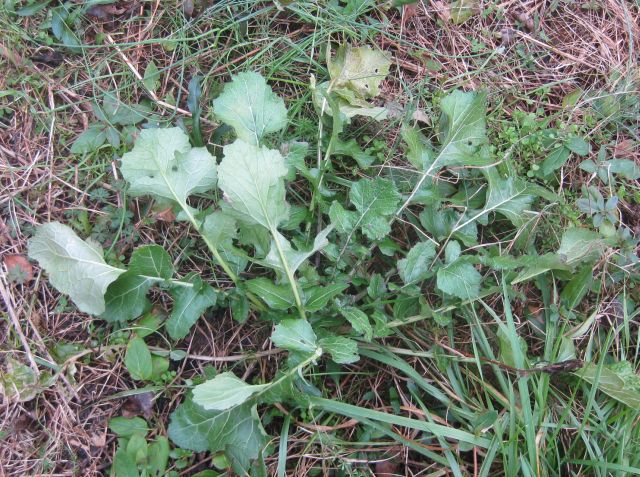
And here is a comparison of a leaf of the above plant with the leaf from a densely sown patch:
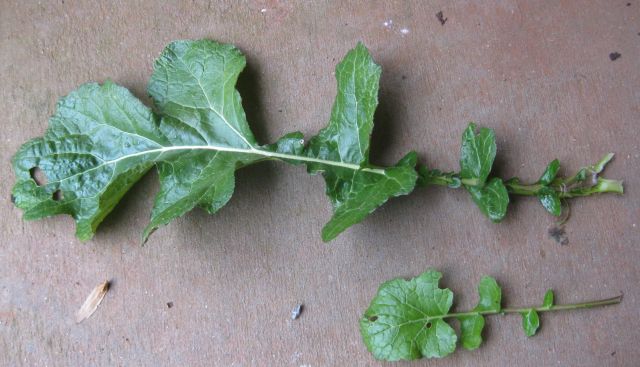
Now for the vegetables which have done poorly. No surprise that arugula is stunted:
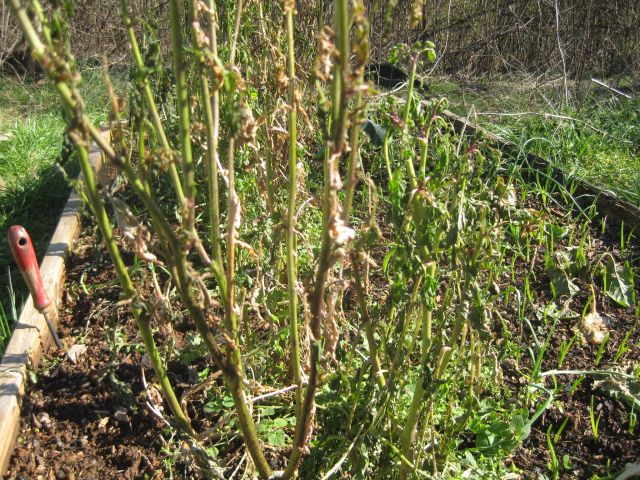
And the chard took a beating:
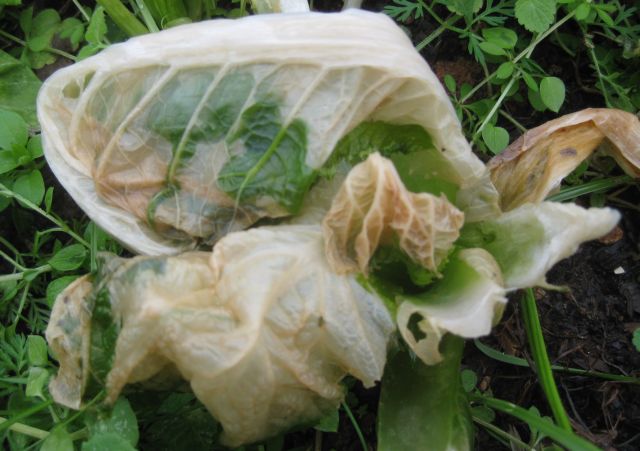
And the cabbage too, did not get off lightly:
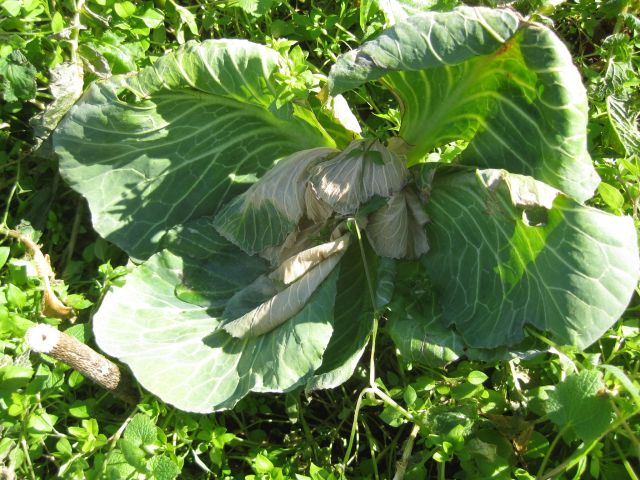 I noticed that the larger plants suffered more than the smaller ones – so the large mustard leaves looked as white as the chard but the smaller mustard plants were relatively unscathed. Similarly, radishes become spongy in freezing temps but the smaller radishes fared better.
I noticed that the larger plants suffered more than the smaller ones – so the large mustard leaves looked as white as the chard but the smaller mustard plants were relatively unscathed. Similarly, radishes become spongy in freezing temps but the smaller radishes fared better.
Next week we expect sub 20 temps and I will be waiting to see how the survivors fare then.
